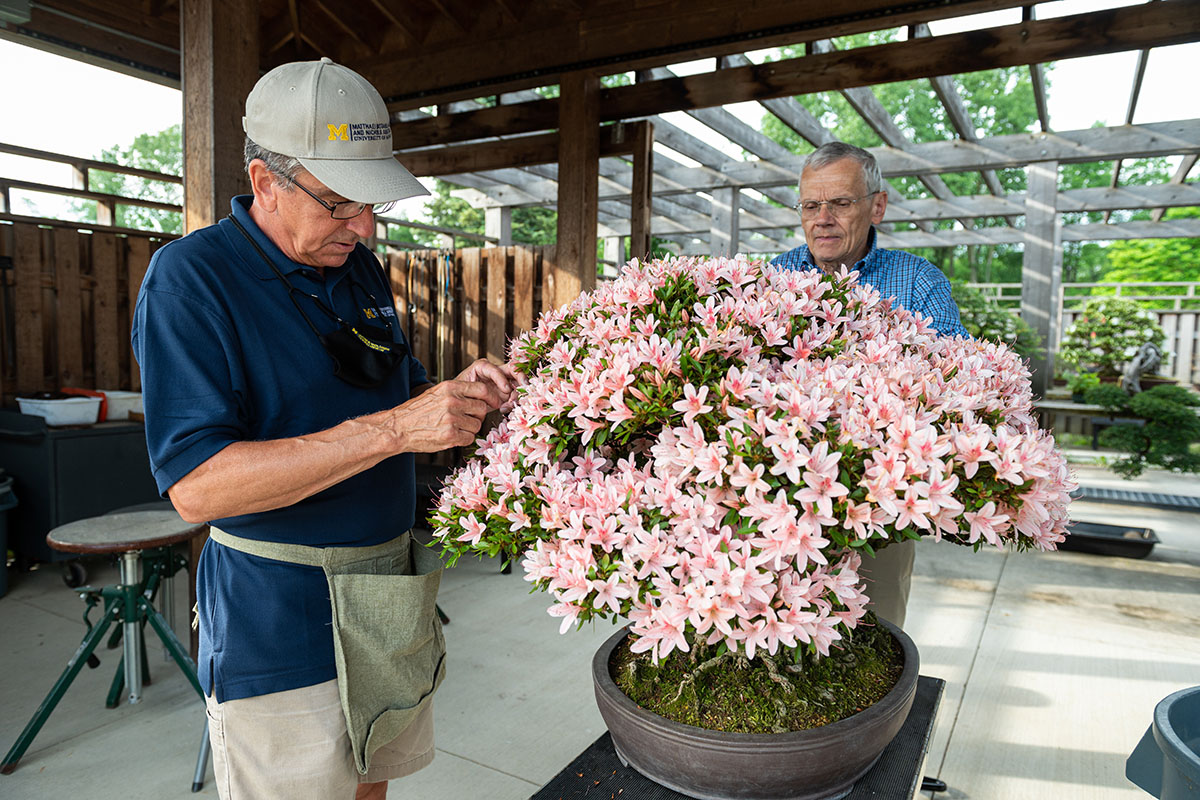Matthaei Botanical Gardens
Free Admission
1800 N. Dixboro Rd, Ann Arbor, MI
Two Places We Call Home
Bonsai lives year-round in the conservatory. From May to October, major displays are within the walled garden with its working studio.
The Bonsai Garden
The bonsai garden is walled so that it becomes ‘a space apart.’ As you approach, only one specimen that is stunning today has the honor to welcome you. Throughout the garden the bonsai are staged so that you can appreciate each one separately. Our entire collection that is not on display can be seen through the Studio.
The garden’s plants are mostly native to Michigan and were selected for their foliage, size, and composition. This is in the spirit of a Japanese-bonsai garden – a harmony of green from native plants and neutral backdrops, interpreted locally.
Tropical Bonsai in the Conservatory
Bonsai are displayed year-round in a dedicated section of the Conservatory’s ‘Temperate House’. From November to April only tropical specimens are featured – many are species of Ficus – better known as banyans, Benjamin figs, Bengal figs, and rubber-plants in familiar roles as full-sized house and office plants.
During the rest of the year any of our specimens may be exhibited here. The intentionally green plantings below the display stands are to help unify and calm the experience in this prominent location.
Why Are the Winter Exhibits Different?
Bonsai is the art of training, but it can’t change the basic biology of the plant. Tropical species grow year-round: we train and exhibit them year-round. Species from climates with cold winters (as China, Japan, Europe, North America) go dormant each fall.
The annual care-cycle of bonsai species from these regions requires winter ‘cold storage’. We have special greenhouses kept just above freezing as well as ‘cold frames’ – partially underground spaces – so that the trees get their biologically-required winter rest.
Moving to Leadership
A bold future beckons: engaging people new-to-bonsai while deepening our existing relationships and networks. Everything depends on our specimens being exemplary. As we on-board one of the continent’s most important private collections, we’ll be refining our existing collection and expanding our audiences.
We need your help – spreading the word, coming to see the specimens through the year, learning more, and supporting us.
